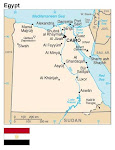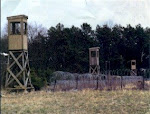 WASHINGTON - The Pentagon will buy and operate one or two commercial imagery satellites and plans to design and build another with more sophisticated spying capabilities, according to government and private industry officials.The satellites could spy on enemy troop movements, spot construction at suspected nuclear sites and alert commanders to new militant training camps.The Broad Area Surveillance Intelligence Capability (BASIC) satellite system will cost between $2 billion and $4 billion. It would add to the secret constellation of satellites that now circle the Earth, producing still images that are pieced together into one large mosaic.A single satellite can visit one spot on Earth twice every day. BASIC's additional satellites will allow the photos to be updated more often, alerting U.S. government users to potential trouble, humanitarian crises or natural disasters like floods.The announcement of the BASIC program, expected this week, has been delayed for months, with Pentagon, Air Force, and National Reconnaissance Office officials fighting over who should be in charge of buying, building and operating the satellites. They have also debated whose needs the system will cater to: senior military commanders or policymakers in Washington, D.C.At stake was not just money but power: billion-dollar budgets are up for grabs, and the agencies' traditional missions and way of doing business have been hanging in the balance.The National Reconnaissance Office ultimately won the right to buy and operate the satellites, besting the Air Force. And military commanders' needs trumped the White House. They will, for the first time, have the power to dictate what satellites will photograph when they pass overhead. The concept is known as "assured tasking.""The battlefield today is so dynamic the warfighter needs to be able to respond at a moment's notice. Knowing they have the opportunity to have assured tasking in the next pass of satellite becomes very critical and helpful in the planning of their operations," Josh Hartman, the Pentagon director for space and intelligence capability acquisition, told The Associated Press.Military commanders have long desired that kind of tasking control. Now, they submit their requests to a national intelligence authority which prioritizes the missions. And sometimes those requests are delayed or rejected.The new satellite system is meant to bridge what intelligence agencies fear will become a huge gap caused by cancellation in September 2005 of a major component of the Future Imagery Architecture system overseen by the National Reconnaissance Office. Prime contractor The Boeing Co., headquartered in Chicago, ran into technical problems developing the satellite and spent nearly $10 billion, blowing its budget by $3 billion to $5 billion before the Pentagon pulled the plug, according to industry experts and government reports.The Pentagon now hopes BASIC will fill in some of the lost capabilities.
WASHINGTON - The Pentagon will buy and operate one or two commercial imagery satellites and plans to design and build another with more sophisticated spying capabilities, according to government and private industry officials.The satellites could spy on enemy troop movements, spot construction at suspected nuclear sites and alert commanders to new militant training camps.The Broad Area Surveillance Intelligence Capability (BASIC) satellite system will cost between $2 billion and $4 billion. It would add to the secret constellation of satellites that now circle the Earth, producing still images that are pieced together into one large mosaic.A single satellite can visit one spot on Earth twice every day. BASIC's additional satellites will allow the photos to be updated more often, alerting U.S. government users to potential trouble, humanitarian crises or natural disasters like floods.The announcement of the BASIC program, expected this week, has been delayed for months, with Pentagon, Air Force, and National Reconnaissance Office officials fighting over who should be in charge of buying, building and operating the satellites. They have also debated whose needs the system will cater to: senior military commanders or policymakers in Washington, D.C.At stake was not just money but power: billion-dollar budgets are up for grabs, and the agencies' traditional missions and way of doing business have been hanging in the balance.The National Reconnaissance Office ultimately won the right to buy and operate the satellites, besting the Air Force. And military commanders' needs trumped the White House. They will, for the first time, have the power to dictate what satellites will photograph when they pass overhead. The concept is known as "assured tasking.""The battlefield today is so dynamic the warfighter needs to be able to respond at a moment's notice. Knowing they have the opportunity to have assured tasking in the next pass of satellite becomes very critical and helpful in the planning of their operations," Josh Hartman, the Pentagon director for space and intelligence capability acquisition, told The Associated Press.Military commanders have long desired that kind of tasking control. Now, they submit their requests to a national intelligence authority which prioritizes the missions. And sometimes those requests are delayed or rejected.The new satellite system is meant to bridge what intelligence agencies fear will become a huge gap caused by cancellation in September 2005 of a major component of the Future Imagery Architecture system overseen by the National Reconnaissance Office. Prime contractor The Boeing Co., headquartered in Chicago, ran into technical problems developing the satellite and spent nearly $10 billion, blowing its budget by $3 billion to $5 billion before the Pentagon pulled the plug, according to industry experts and government reports.The Pentagon now hopes BASIC will fill in some of the lost capabilities._First, it will increase the amount of imagery the National Geospatial Intelligence Agency buys from commercial satellite companies GeoEye, of Dulles, Va., and DigitalGlobe, of Longmont, Col., which are expected to put four new satellites into orbit by 2013. The U.S. military now has a $1 billion contract with two commercial satellite companies to buy space imagery. A U.S. commercial satellite launched in September by DigitalGlobe can make out the outline of 20-inch object from space. This year, GeoEye is launching a satellite with the ability to see the outlines of a 16-inch object. By 2011, that capability is expected to sharpen to nearly 10 inches. Secret government imagery satellites are believed by experts to have better than six-inch resolution.
_Second, the National Reconnaissance Office will buy, launch and operate one or two commercial imagery satellites with 16-inch resolution, probably around 2014. A solicitation for proposals will be issued shortly.
_Third, NRO will design and build another more advanced satellite to be launched in 2018. The capability of that satellite, known as Block II, will be defined later.
Underpinning this will be the creation of a new ground intelligence station that will not only download the imagery directly from the satellites and make it available to all users, but will also — in theory — allow the users to tap into the national intelligence database that holds imagery produced by all spy equipment and sources such as satellites, aircraft and ground sensors.
The Pentagon's plan to both buy commercial satellite imagery and operate similar satellites of its own is an attempt to balance two competing goals. National space policy requires the Pentagon to buy as much commercial imagery as possible to help the companies withstand competition from subsidized foreign satellite companies. At the same time the Pentagon does not want to give the companies so much business that they tailor their services to government needs and ignore the private sector they need to make them self-supporting.The Pentagon satellites will also be a back-up capability in case future commercial satellites malfunction.The nation's classified network of satellites represents some of the most expensive government programs and receives almost no public oversight. Because of their multibillion-dollar price tags, sensitive missions and lengthy development schedules, spy agencies go to great pains to keep details from becoming public.But if history is an indicator, the price tag could climb much higher as the new satellite is built. The House and Senate intelligence committees have criticized the Pentagon and intelligence agencies' management of space programs. Half the programs have experienced cost growth of 50 percent or more.The Defense Department spends about $20 billion annually on space programs.
As in the days of Noah....






















































































.bmp)

























.bmp)